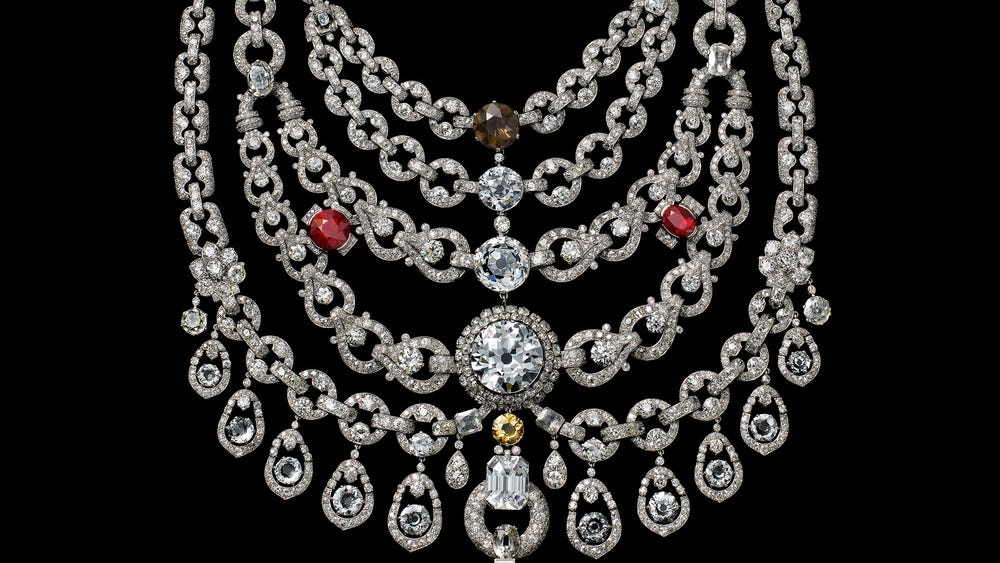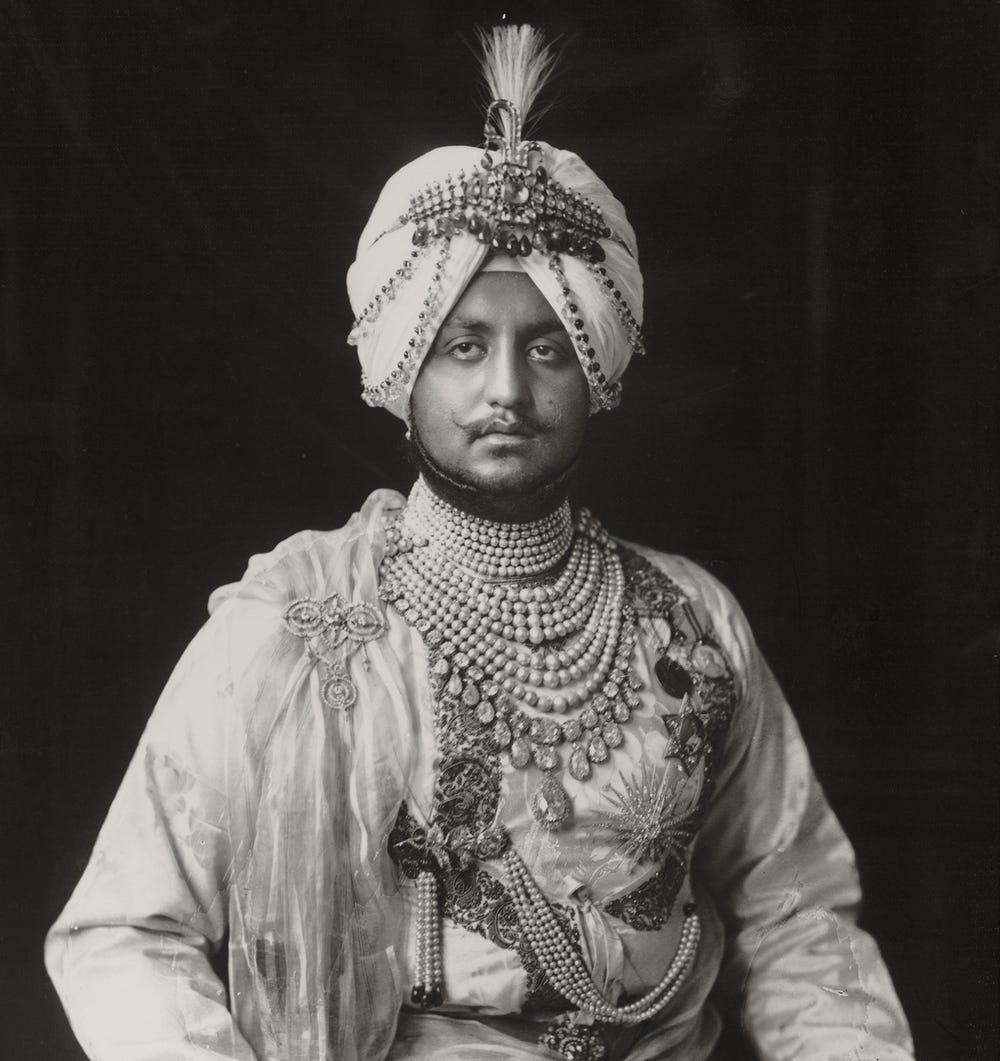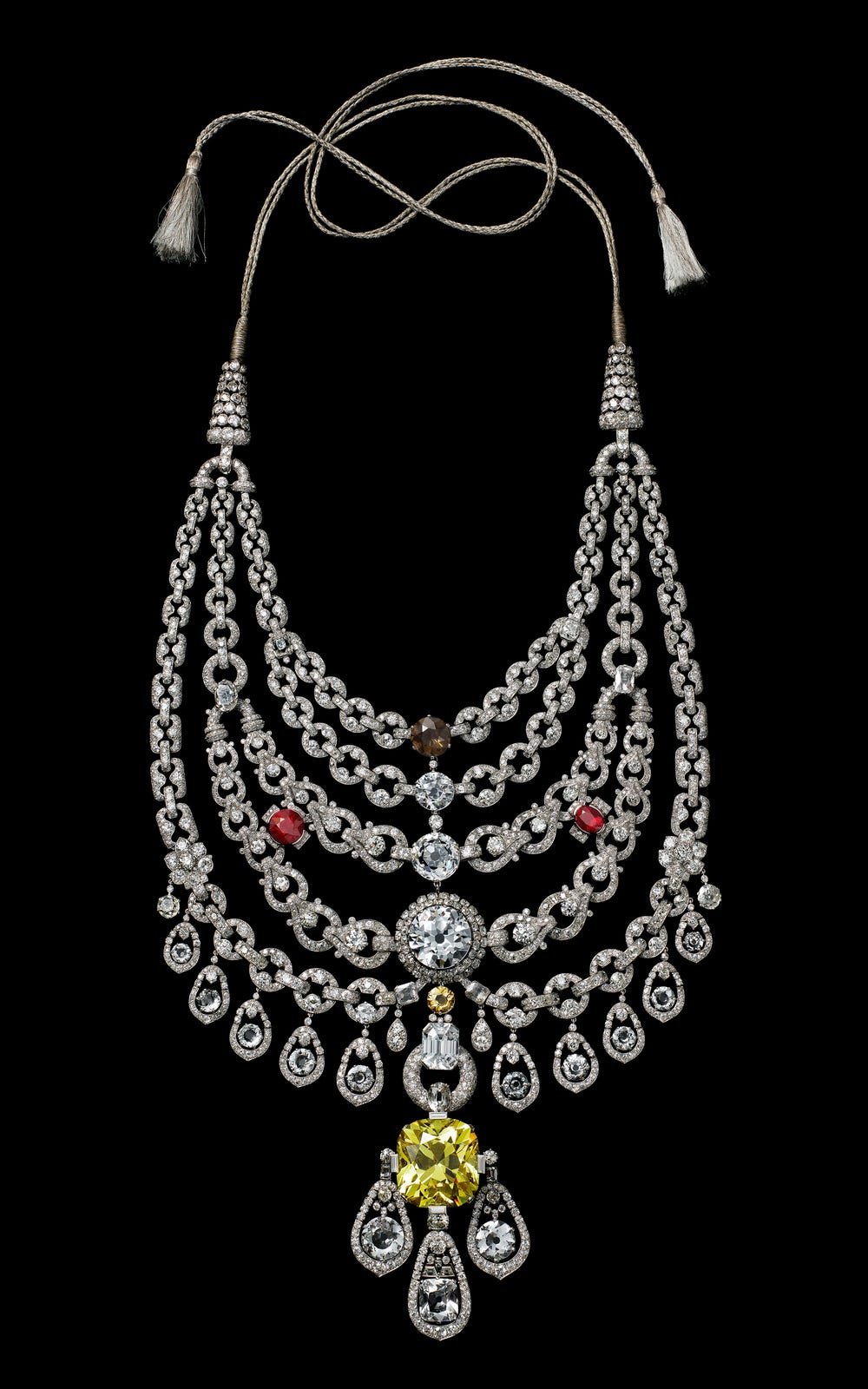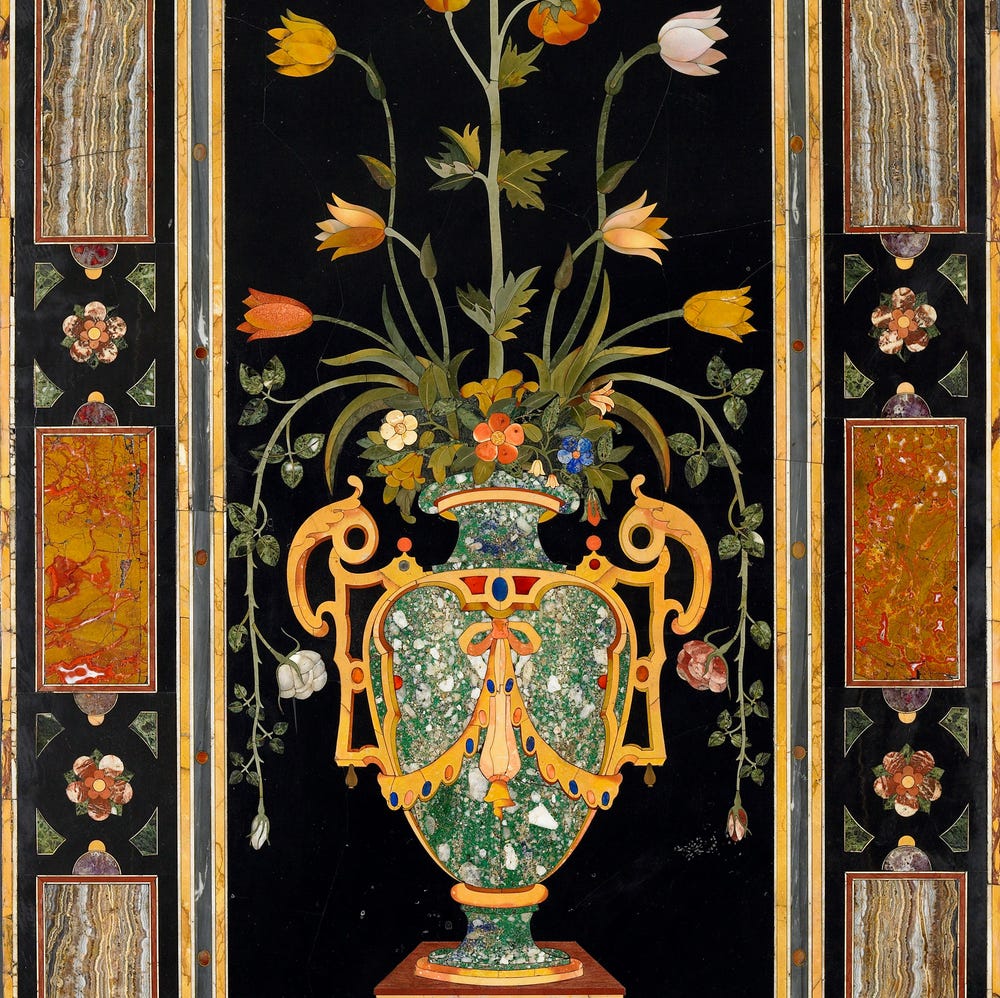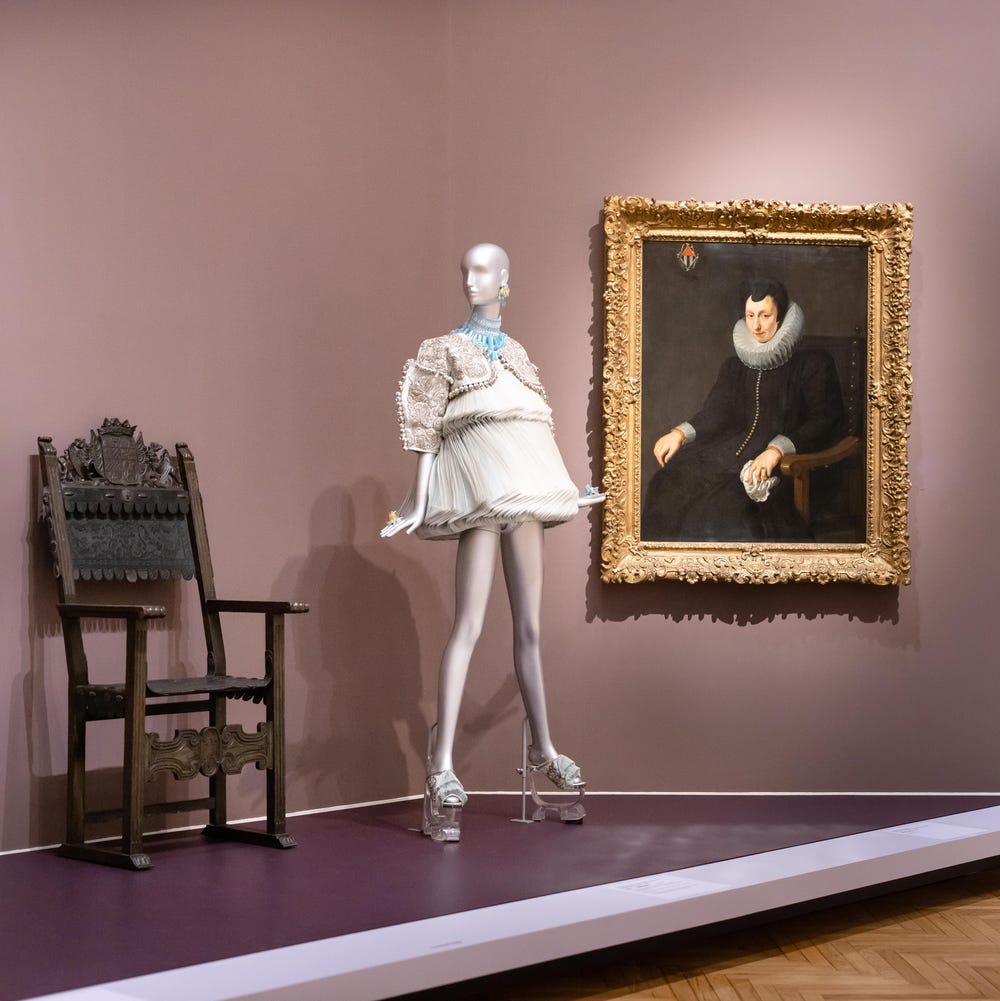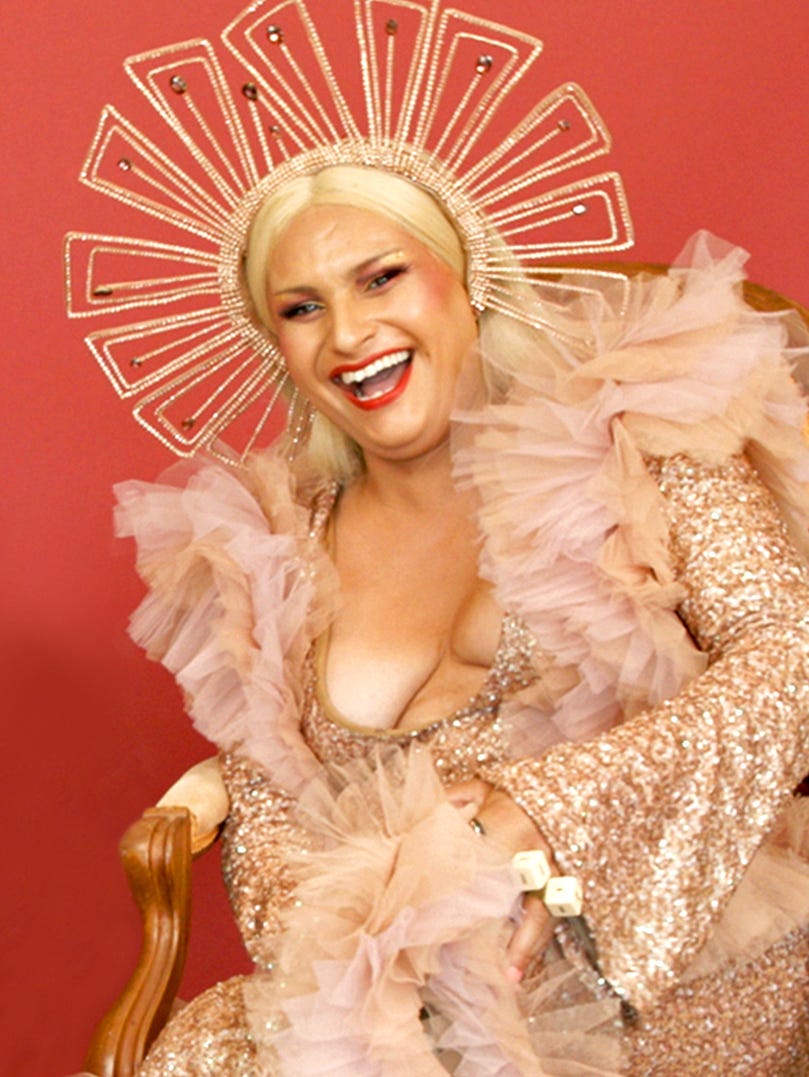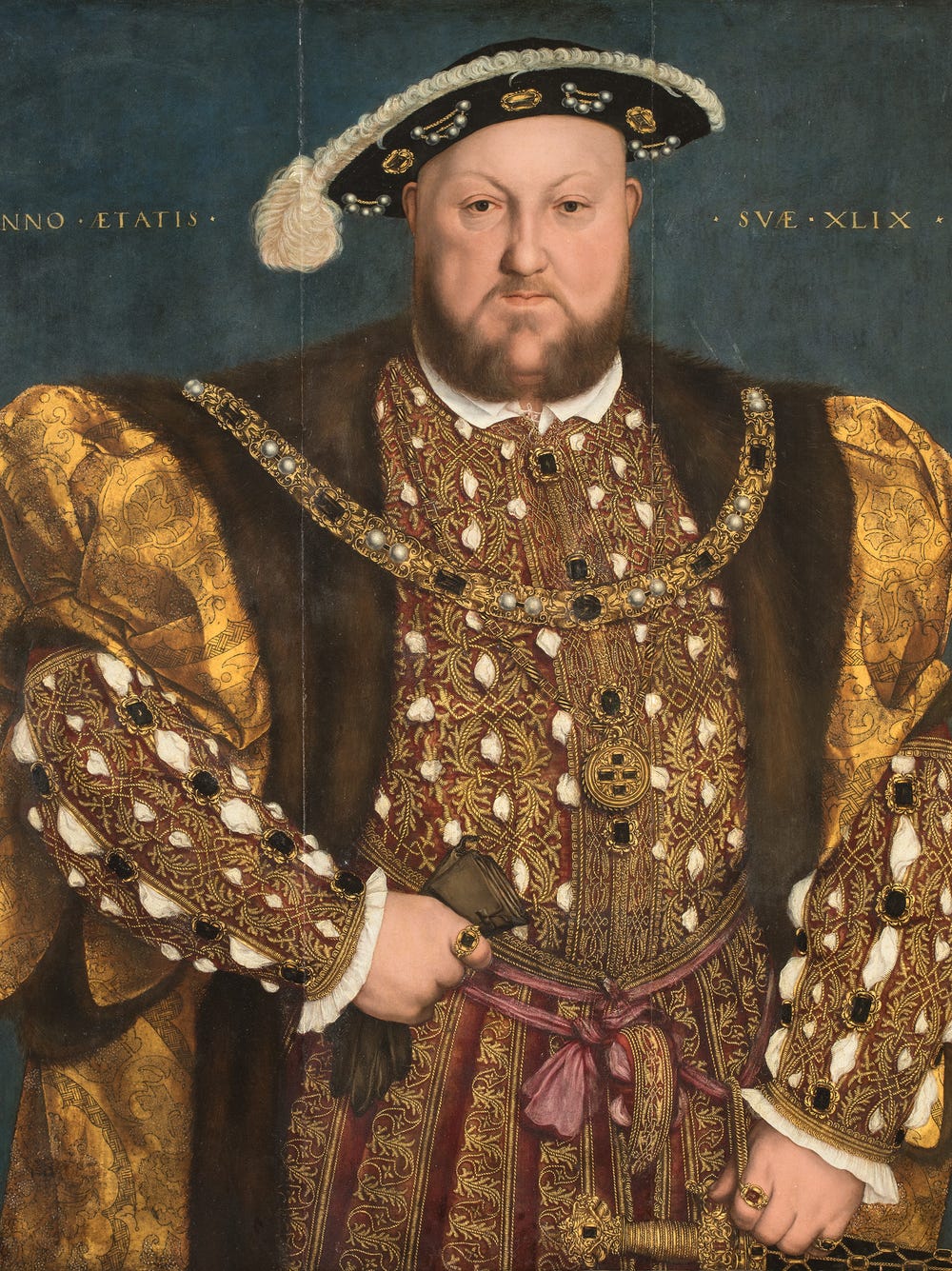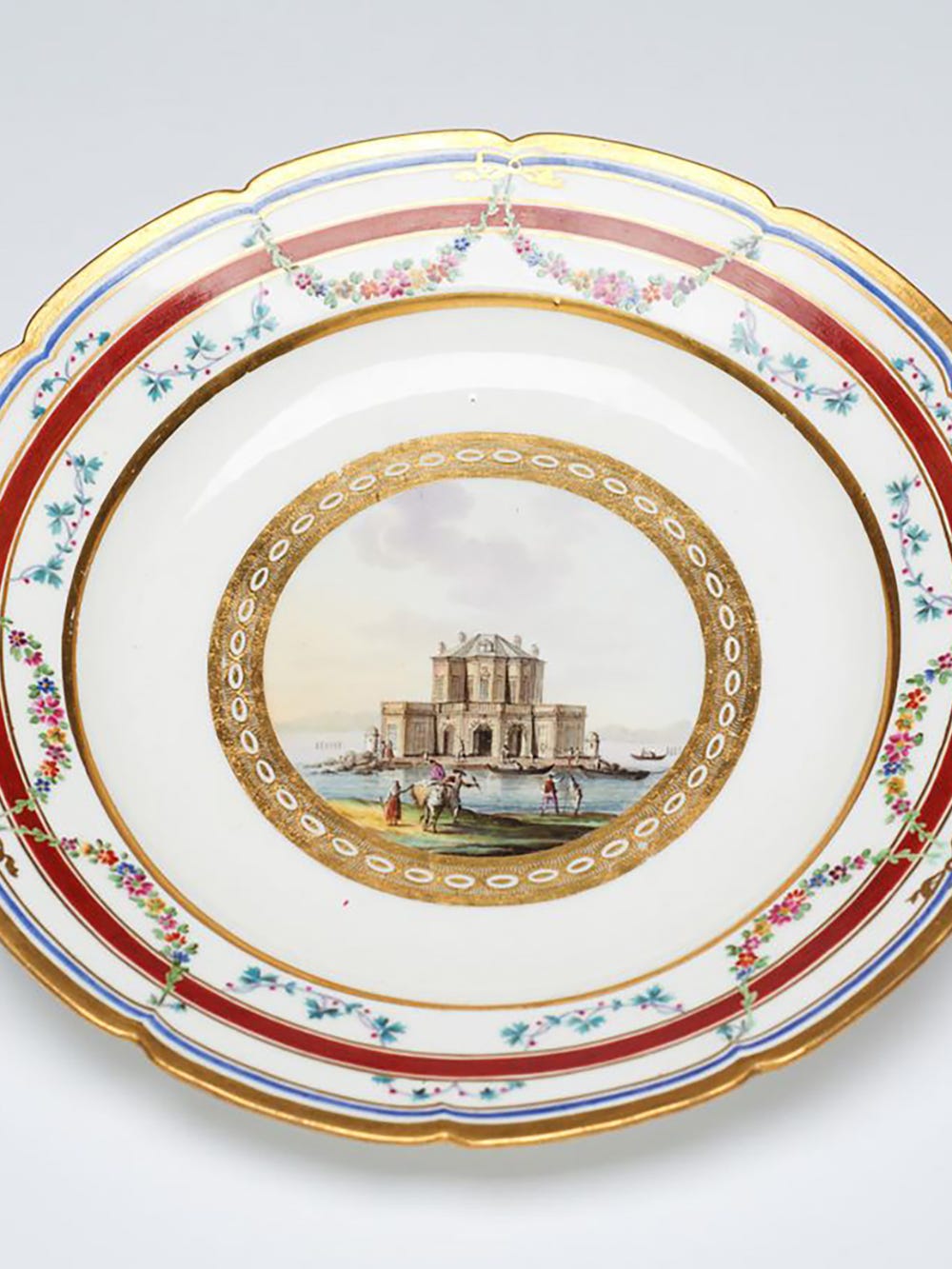East Meets West: Jewels of the Maharajas from The Al Thani Collection explores themes of influence and exchange between India and Europe through dazzling jewelry, carved jades, enameled gold, and famous diamonds. The exhibition features more than 150 exquisite objects made in India or inspired by its traditions, ranging from the 16th century to the present. Here, exhibition curator Martin Chapman explains the theme of gender in East Meets West as, contrary to Western expectations, the most splendid jewelry was supplied exclusively for the male rulers of India.
Rulers across India and Europe used jewelry to underscore their status, but the form and function of gemstones varied greatly from East to West, especially in terms of how they related to gender. In India, Mughal emperors and maharajas were adorned with elaborate set pieces of jewelry—turban ornaments, necklaces, bracelets, and belts—that in Europe would be donned mainly by royal and noble women.
From the Indian perspective, though, maharajas could wear magnificent jewels originally made for European women without any qualms. For instance, the Maharaja of Patiala acquired the large diamond necklace of Empress Eugénie of France. Such necklaces would never be worn by a man in the West, but for the maharaja this type of sumptuous jewelry was an important ingredient in his splendor.
Vandyk, Sir Bhupinder Singh, Maharaja of Patiala [wearing the Empress Eugénie diamond necklace], 1911. Glass plate negative, 12 × 10 in. (30.5 × 25.4 cm). © National Portrait Gallery, London
The later Maharajah of Patiala Sir Bhupinder Singh, who acceded to the throne in 1900, would augment his family’s already sizable jewelry collection in subsequent decades. In the late 1920s, he visited Paris to have new suites of jewelry made. An account of his appearance at the jeweler Boucheron captures the theatrical nature of the court that revolved around the ruler:
—Alain Boucheron, “Boucheron,” in A. Kenneth Snowman, ed., "The Master Jewelers" (London: Thames & Hudson, 1990), 89.The flamboyant Maharajah . . . arrived at Boucheron’s in 1927 accompanied by a retinue of forty servants all wearing pink turbans, his twenty favorite dancing girls and, most important of all, six caskets filled with diamonds, emeralds, sapphires, rubies and pearls of incomparable beauty. Boucheron was commissioned to transform this mass of precious stones, then valued at about eighteen hundred million francs, into tiaras, aigrettes, belts and necklaces.
Necklace, Cartier Paris, special order, 1928. Platinum, old- and rose-cut diamonds (chain and links), one cushion-shaped yellow zirconia, four white zirconias, thirteen white topazes, two synthetic rubies, one smoky quartz, one citrine. Made as a special order for Sir Bhupinder Singh, Maharaja of Patiala. Photograph by Vincent Wulveryck, Cartier Collection © Cartier
The Maharaja of Patiala also went to Cartier Paris. His greatest moment in jewelry was commissioning Cartier to create a vast diamond-and-ruby necklace, completed in 1928, to house the maharaja’s recently acquired enormous De Beers diamond. A cascade of diamond-set chains draped in layers, this necklace was the largest order the Parisian jeweler ever received, using some 2,930 stones. The Patiala necklace disappeared, however, after the 1947 fall of the British Raj and was later found stripped of its largest jewels. It was reconstituted as we see it today from the remaining platinum mount, with copies of the original large diamonds and rubies. In the end, the specific gender associated with jewelry mattered less for either the maharajas or the European monarchs than its magnificence in reflecting the status of the wearer.
Text adapted from the exhibition catalogue East Meets West: Jewels of the Maharajas from The Al Thani Collection (San Francisco: Fine Arts Museums of San Francisco; and Munich, London, New York: DelMonico Books • Prestel, 2018). Martin Chapman is Curator in Charge, European Decorative Arts and Sculpture.
